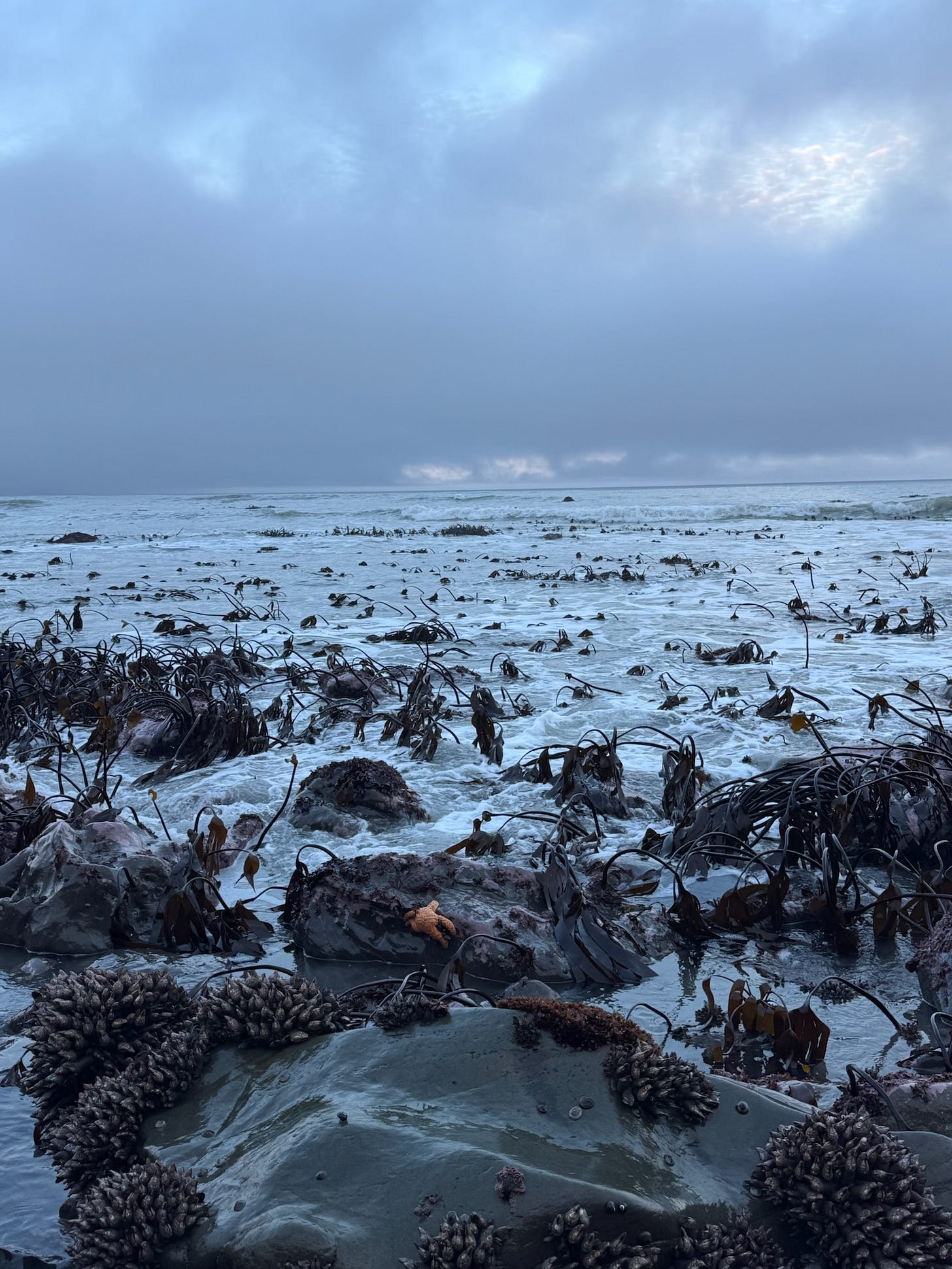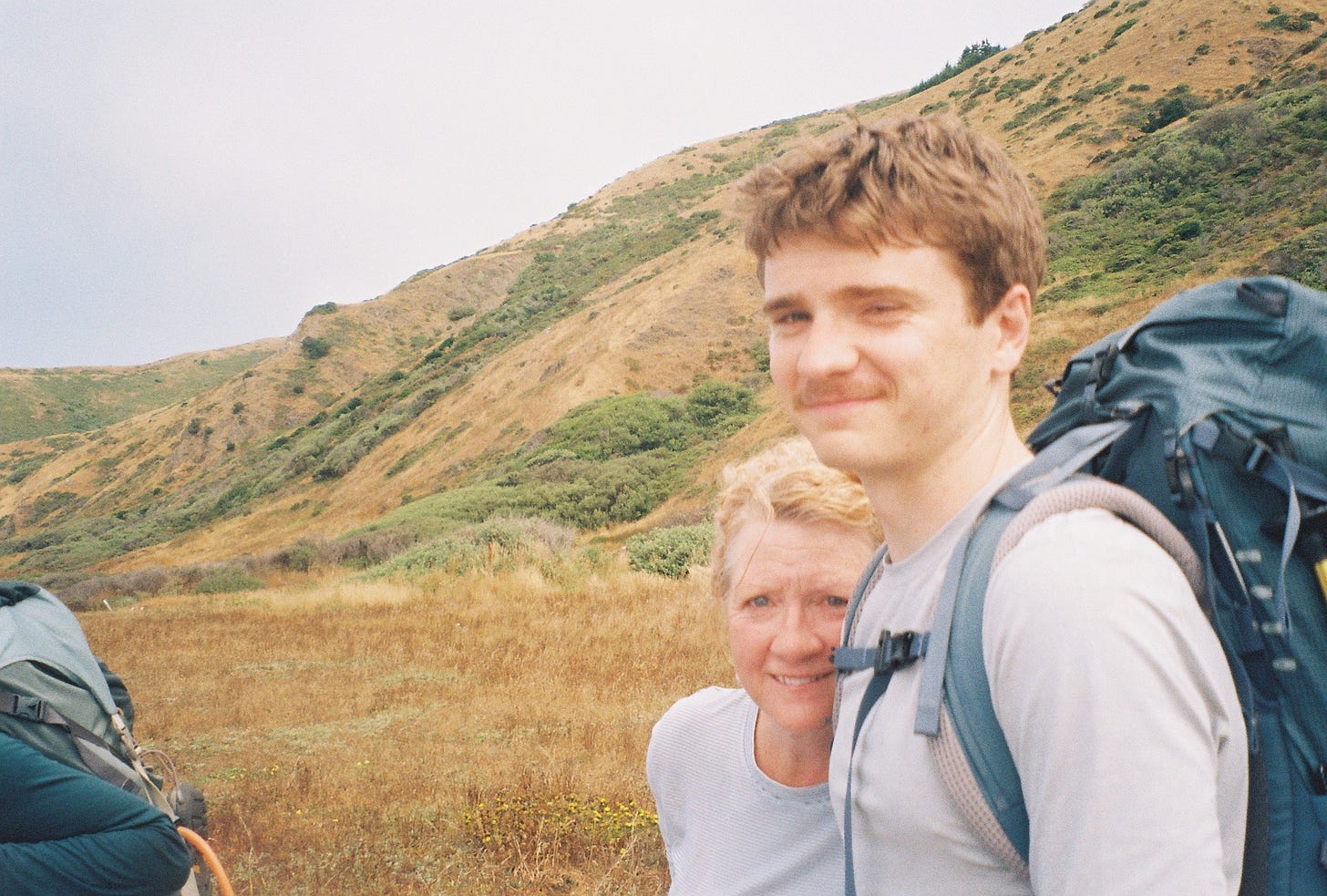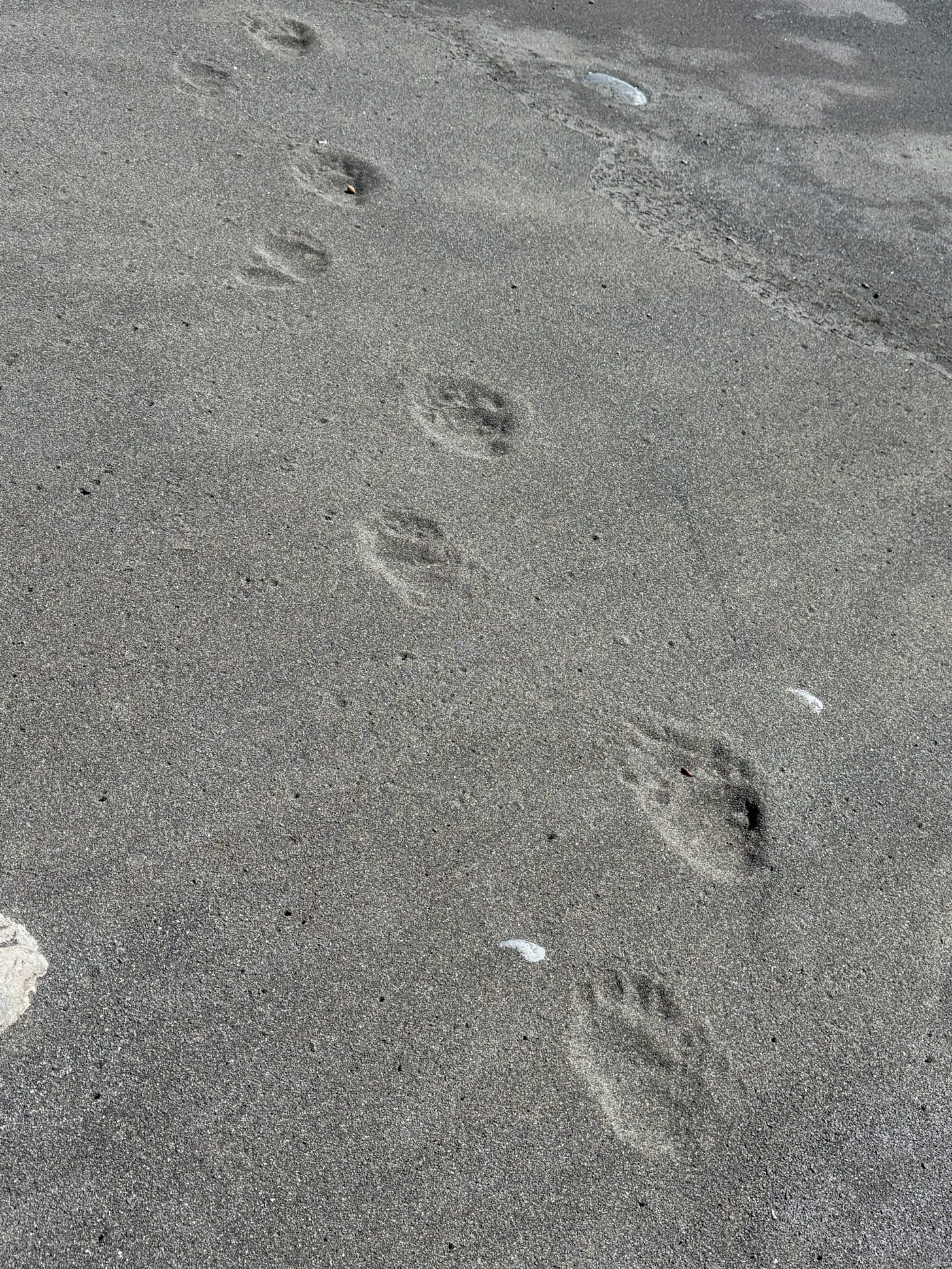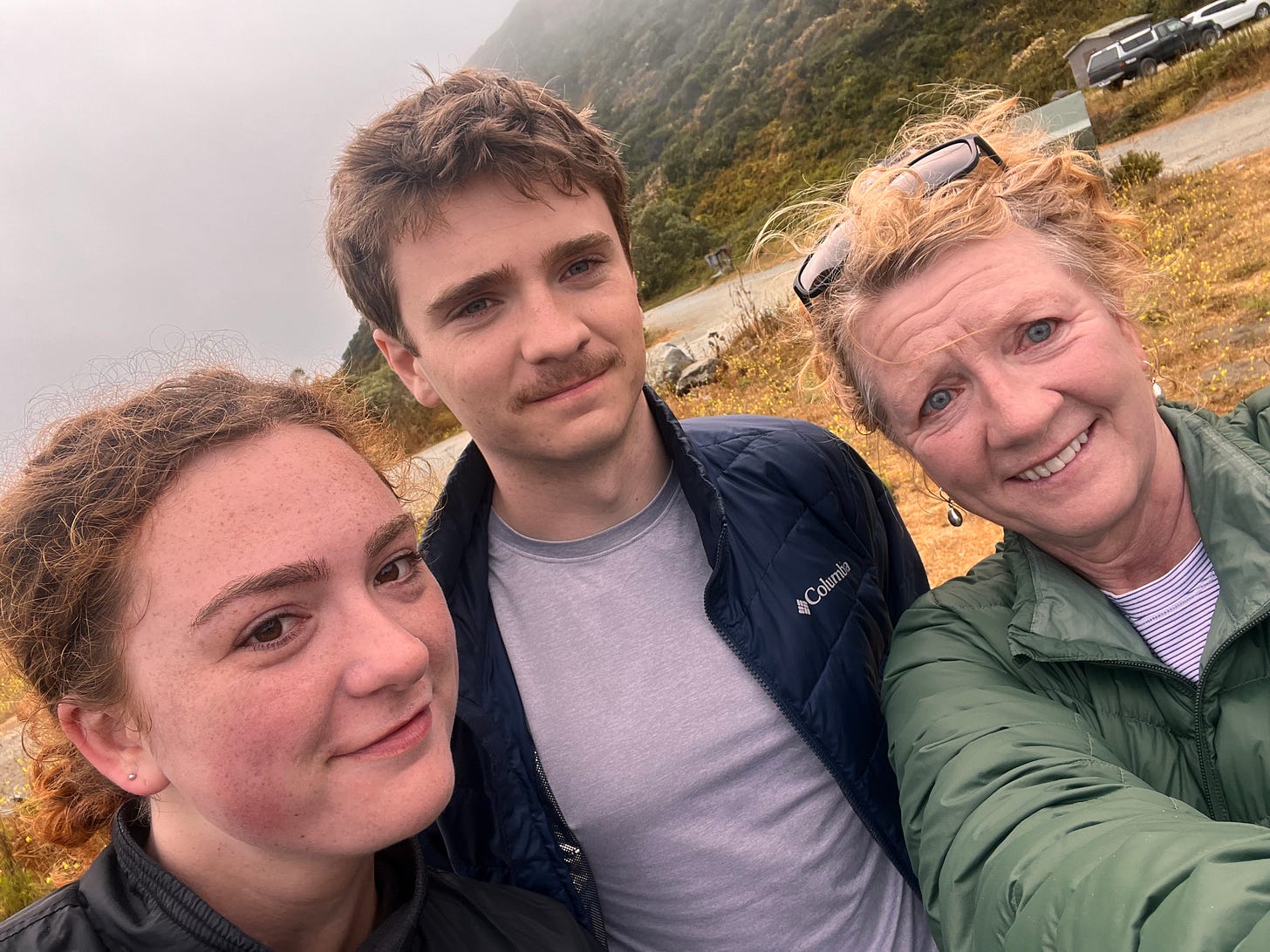Facing my fears and finding my way on the Lost Coast
I always say, “If I knew how hard something was going to be before I did it, I’d never do anything great in my life.”
Such was the case last week when I spent three days backpacking 25 miles of the Lost Coast of California.
My oldest child, Maev, my youngest child, Mick and I had planned the trip earlier in the year, purchased our permits ($6 per day), reserved a shuttle ($98 per person) and packed our backpacks for an adventure into the most remote and inaccessible section of the West Coast.
On the morning of July 24, we parked our car in the parking lot of Black Sands Beach, which would be the final destination of our hike, and loaded ourselves and our packs into a van that drove us two hours north on a bumpy, windy road through the mountains of Humboldt County.
As we made our way to the trailhead of Mattole Beach, we listened as the shuttle driver shared dos and don’ts and helpful hints for the trip:
· Pay attention to the tide schedules; if you don’t think you can make it through the danger zone before high tide, wait for the next low tide
· Use your bear canisters to store all food and toiletries
· Watch for rattlesnakes, especially at Randall Flat
· Poison Oak is everywhere. Always wear long sleeves and pants and wash your clothes twice when you get home
· There are lots of rogue waves and rip tides. Don’t go in the water and never turn your back on the ocean
Amid the warnings, there were also reminders to enjoy the beauty of the rugged coast:
· Watch the sunsets over the Pacific Ocean
· Keep your eyes out for the sea lions, dolphins and whales, as well as deer, fox and bears
· Enjoy the waves and the coastline from a distance
· Take breaks at the numerous freshwater streams flowing down the mountains and into the ocean
While the route of our trip was a mere 25 miles, the majority of it would take place on difficult, if not treacherous terrain. Our shuttle driver, fellow shuttle passengers and all the online bloggers warned us not to expect a pace of more than one mile per hour. The beach sections varied from huge slippery, moss-covered boulders to wobbly rocks the size of watermelons to pebbles to deep sand.
Many of these sections were located in the “danger zones,” deemed impassable during high tide. That meant we had only a certain number of hours to get through that zone without being engulfed in waves or swept out to sea; or if you were lucky, climb an otherwise inaccessible cliff to higher ground.
Waking at 4:30 a.m. every morning and being on the trail by 5 a.m. gave us a good amount of time to get through the danger zones. We never cut it close on the tides and we made it through every zone with time to spare. There were a few rogue waves that reached our feet, but no one twisted an ankle and no one was swept out to sea. At the end of the trip, we found that we’d averaged 1.2 miles per hour. Better than average, but not by much.
I’ve carried a lifelong fear of bears, particularly grizzly bears, but black bears terrify me, too. We didn’t see any bears, but we saw so many bear tracks and bear scat that I can honestly say my fear of black bears has been dramatically reduced. Something about the fact that they were traveling this same rugged path as we were for most of the distance made them seem less threatening. Not quite companions, but definitely less scary.
At the end of the trip, we talked about the parts that scared us the most. With the threat of impassable tidal zones and having no way to call for help if it was needed, the whole trip felt dangerous to me. But when we put those fears aside, I was surprised at what actually scared us the most.
For Mick, it was the threat of landslides as we walked along mountainsides that looked like they were ready to crumble above us. More than once, pebbles and rocks landed on our path below.
For me, it was the unexpected cliffs. At certain points, we’d follow a marked trail up and above the ocean to find ourselves on sheer cliffs with a rocky beach and the surf pounding 100 feet below. The first time I found myself on the side of one of those cliffs, everything in me said, “Turn around and go home.” But that wasn’t possible, so I continued on. Exposure therapy to the max.
And for Maev who has acquired food poisoning more often in her short life than any person I’ve ever known, it was eating the foil-pouched chicken that I put in our tacos on the first night.
We saw wildlife including dolphins, sea lions, deer and a rattlesnake that crossed the path directly between Maev and Mick. We never saw a sunset because we were in our tents asleep before 8 p.m. every single night.
The gaiters we wore couldn’t keep all the sand out of our shoes. Five days later, I still have sand under my toenails.
In addition to sandy toes, I came home with a little less fear of the unknown, a lot more confidence in myself, a deeper respect for my kids who I already deeply admired and memories to last me the rest of my life.
I’m so glad I didn’t know how hard it would be to hike the Lost Coast. Had I known how scary and difficult the trip would be before I hiked it, I surely would have chosen not to go.
What a terrible loss that would have been.








What a great adventure. (Note no exclamation mark :) ). I so admire your grit, Shelley. Glad Maev and Mick were there to back you up. I'm not much of a physical risk taker because I was a sick kid and didn't learn to have faith in my body's abilities. However I did manage to do a 10-section zip line on our last cruise in 2020. Once was enough. :
Awesome. My most challenging walk, a 3. Plus mile walk around my amazing green belt but as my wife says i stop a lot and go slow. You and your kids are an inspiration, bob like me as my wife walks miles anywhere we travel are content to hear the stories. A great read, tx